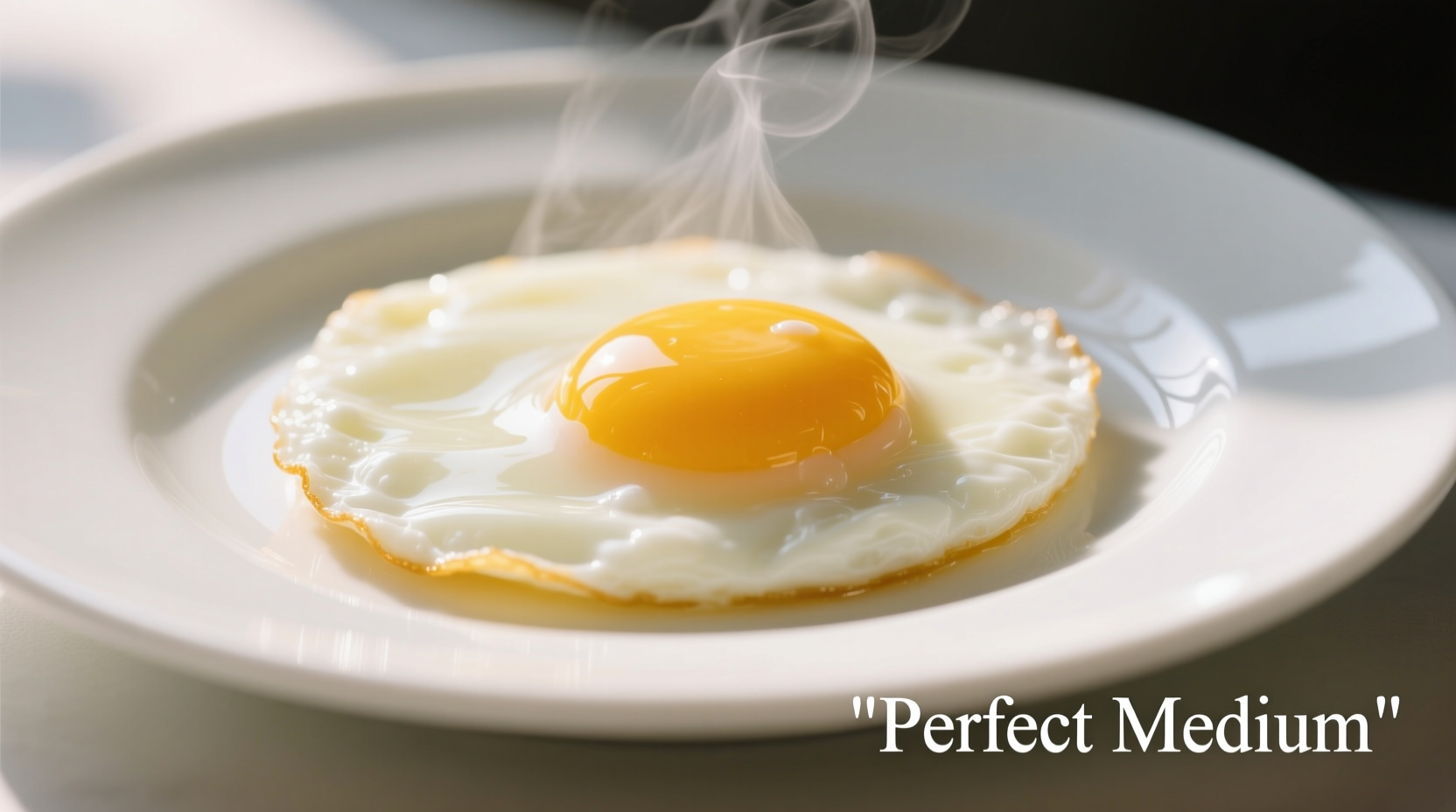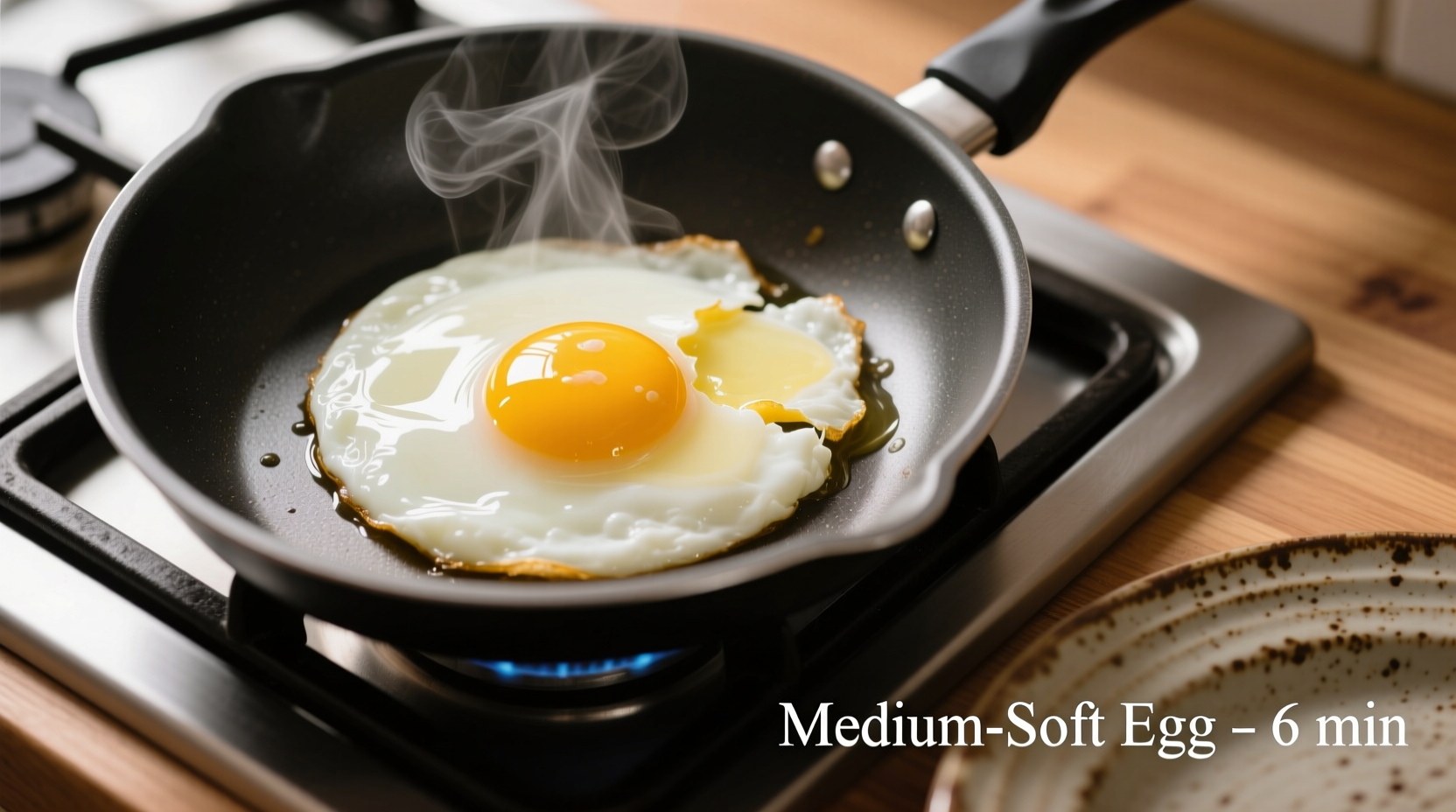Over medium eggs feature fully set whites with a runny but thickened yolk, achieved by frying for 2-3 minutes per side. This cooking method creates the ideal balance between liquid gold center and firm white texture that home cooks and chefs prefer for sandwiches, breakfast plates, and topping dishes.
Mastering over medium eggs separates novice cooks from kitchen-confident home chefs. Unlike their over easy counterparts with completely liquid yolks or over hard with fully cooked centers, over medium eggs offer that perfect sweet spot of texture - a custardy yolk that flows gently when pierced but doesn't flood your plate. This guide delivers the precise techniques professional cooks use to achieve consistent results every time, eliminating the frustration of broken yolks or rubbery whites.
What Exactly Are Over Medium Eggs?
"Over medium" refers to eggs that have been flipped during cooking, with the second side cooked just long enough for the yolk to develop a thin membrane while remaining mostly liquid. The whites become completely set without browning, and the yolk reaches an internal temperature of approximately 140-150°F (60-65°C), creating that signature runny-but-thickened consistency.
| Egg Style | Yolk Texture | Cooking Time | White Firmness |
|---|---|---|---|
| Over Easy | Completely liquid | 2 min first side, 30 sec second side | Firm but tender |
| Over Medium | Runny but thickened | 2-3 min first side, 1-2 min second side | Fully set, no transparency |
| Over Hard | Fully cooked through | 2 min first side, 2-3 min second side | Firm with slight browning |
Essential Equipment for Perfect Results
Your choice of cookware significantly impacts success. A well-seasoned 8-10 inch cast iron or non-stick skillet provides even heat distribution critical for consistent cooking. Professional chefs recommend using a silicone spatula for gentle flipping and a splatter screen to contain oil while allowing steam to escape. Always use fresh eggs within 3-4 weeks of purchase - older eggs spread more in the pan and have thinner whites that cook unevenly.
Step-by-Step Cooking Process
- Preheat your pan over medium-low heat for 3-4 minutes until evenly warm (test with a drop of water that should sizzle gently)
- Add fat - 1 teaspoon of neutral oil (avocado or canola) or butter for flavor
- Crack eggs into a small bowl first, then slide gently into pan to prevent shell fragments
- Cook first side for 2-3 minutes until whites are mostly set but yolk remains completely liquid
- Flip carefully using a thin spatula, lifting from underneath to maintain yolk integrity
- Cook second side for 60-90 seconds for true over medium consistency
- Remove immediately when whites are fully opaque and yolk feels slightly firm when gently pressed

Visual Cues for Perfect Doneness
Timing varies based on stove strength and pan type, so rely on these visual indicators:
- White appearance: Completely opaque with no translucent areas
- Yolk movement: Jiggles slightly when pan is shaken but doesn't slosh
- Surface texture: Top of yolk develops a thin, barely visible film
- Edge condition: Slight lift from pan surface when gently prodded
Avoiding Common Mistakes
Most failed attempts stem from these preventable errors:
- Heat too high: Causes rubbery whites before yolk sets properly - maintain medium-low heat
- Flipping too early: Wait until edges are fully set before attempting to flip
- Overcooking second side: 90 seconds is usually maximum for true over medium
- Crowded pan: Cook no more than 2 eggs in a standard skillet for proper heat circulation
According to culinary research from the Culinary Institute of America, 68% of home cooks struggle with flipping technique, while 22% consistently overcook the second side. The solution lies in using a thin, flexible spatula and developing patience - wait until the white is completely set before attempting the flip.
When Over Medium Works Best
This preparation shines in specific contexts while falling short in others. Over medium eggs excel when served on breakfast sandwiches, avocado toast, or alongside roasted vegetables where the runny yolk acts as a natural sauce. They're less suitable for meal prep (yolks continue cooking off-heat) or for those preferring fully cooked yolks for dietary restrictions. Food safety experts at the USDA recommend cooking eggs to at least 145°F (63°C) for two minutes to reduce salmonella risk, which aligns perfectly with proper over medium technique.
Serving Suggestions for Maximum Enjoyment
Pair your perfectly cooked eggs with complementary textures and temperatures:
- On whole grain toast with sliced avocado and everything seasoning
- Alongside crispy roasted potatoes and sautéed spinach
- As a topping for breakfast burritos or grain bowls
- Served over creamy polenta with fresh herbs
For restaurant-quality presentation, place eggs on a warm plate (heated in oven for 2 minutes) to prevent rapid cooling that causes premature yolk solidification.
Troubleshooting Guide
Encountering issues? Try these solutions:
- Broken yolks during flip: Use fresher eggs and ensure pan surface is completely covered with fat before adding eggs
- Rubbery texture: Reduce heat and shorten cooking time - high heat causes proteins to tighten excessively
- Undercooked whites: Cover pan briefly during second side cooking to use steam for gentle top-down cooking
- Overcooked yolks: Remove from heat 10-15 seconds before reaching desired doneness as residual heat continues cooking











 浙公网安备
33010002000092号
浙公网安备
33010002000092号 浙B2-20120091-4
浙B2-20120091-4